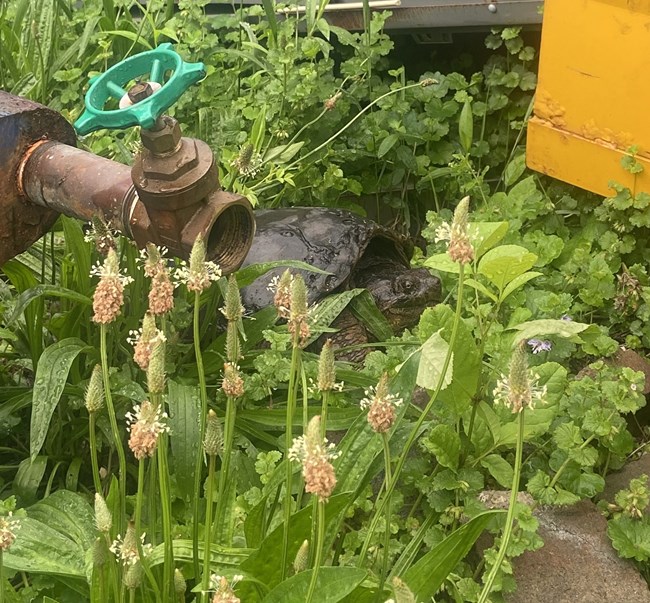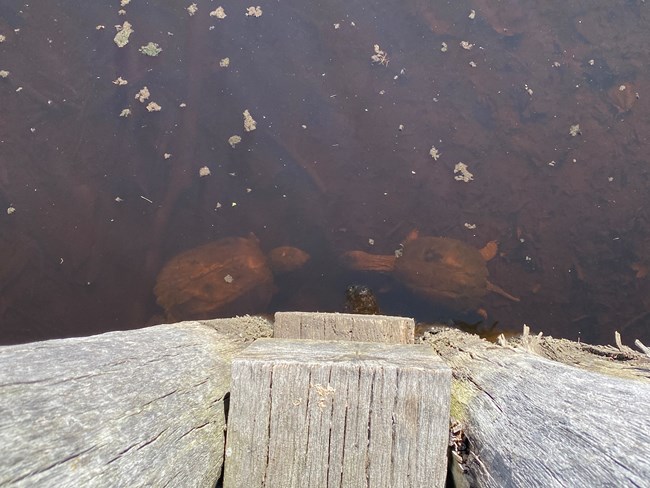Last updated: August 20, 2021
Article
Snapping Turtles

NPS Photo / Kelsey Raver
Where do we find Snapping Turtles in the park?
The Saugus River is home to common snapping turtles (Chelydra serpentina). They are most often seen lying on the bottom in the turning basin around the dock, but in June and July you will occasionally come across them out on the lawn looking for spots to lay their eggs. The snapping turtle is a large freshwater turtle with a heavy, muscular build, sharp claws, a long flexible neck, a sharp serrated beak, and powerful jaws. Like most wildlife snapping turtles will defend themselves if they feel threatened. For your safety, please stay at least five feet from any snapping turtle.
What is their lifecycle?
Snapping turtles generally live in shallow ponds and streams, but they can also be found in brackish environments like the Saugus River estuary. They are opportunistic omnivores, feeding on plants as well as invertebrates, fish, frogs, reptiles, occasional birds, and small mammals. Shy by nature, they will hide in the bottom sediment or swim rapidly away if they see you.

NPS Photo / Bill Fuchs
Why do snapping turtles come to land?
Snapping turtles spend most of their lives under water occasionally sticking just the tips of their nostrils up for air. In the winter they can go into hibernation and not breath for months. All that changes in early summer when the females come out of the water to lay their eggs on dry land. Normally very shy, females on land can be aggressive if they feel threatened and have long necks that allow them to strike out with lightning speed and inflict severe bites.
How do they nest?
Female turtles will travel long distances on land looking for warm, sandy spots to lay their eggs. They dig a hole, deposit 25 to 80 eggs and then backfill the hole with sand. Incubation time depends on temperature and ranges from 9 to 18 weeks. When the young hatch, they instinctively head for water.
Are they endangered? Does anything threaten them?
Snapping turtles are not considered endangered. They are hardy and tolerate a wide range of environments including brackish water, cold temperatures, and a fairly high level of pollution. Many states allow hunting them, but their tolerance for pollution can be a problem for people that eat them because snapping turtle meat can contain high levels of heavy metals and other pollutants.
Adults have no natural predators, but many predators dig up the eggs or eat the hatchlings.
Where in the United States do they live?
They have a wide range that includes all of the eastern and mid-western United States.
